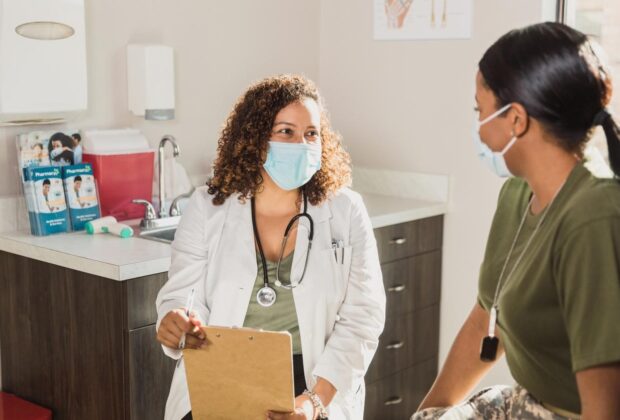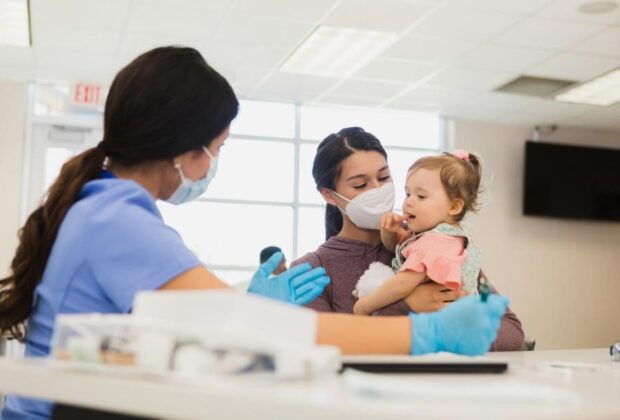The US healthcare system provided lifesaving care throughout the pandemic, but the experience took a toll on the workforce and the industry. However, as this impact begins to lessen and things return to normal, there are opportunities to reinforce the system and make it better for years to come. Here are some of the ways in which the organization and its delivery of care are being improved thanks to the lessons learned during COVID-19.
Recruitment and retention of staff are being prioritized
To maintain the high standards of care offered to the public, the system needs to increase the number of health workers it employs. Currently, the US and the rest of the world are experiencing a worrying shortage of staff in many health-related professions. The problem was not initiated by the COVID-19 crisis, but increasing demands placed on the system as a result of the pandemic certainly made things worse. There are many reasons more clinicians are needed, from the aging population to changes in healthcare provision and the growth of this sector. Although such a complex issue cannot be rectified easily, or quickly, hospitals have been more motivated to act in the aftermath of COVID-19.
Direct entry courses into nursing are available
According to a 2022 report by Kaufman Hall on the state of healthcare in the US, hospitals have now ‘increased their recruitment and retention strategies’ in order to tackle this challenge. As well as increasing wages and improving conditions for staff, healthcare facilities are becoming more generous with bonuses. For people who want a more senior position in their hospital and those who are only just considering a career in the profession, now is a great time to act. At Elmhurst University, there is a direct entry MSN for non nurses. This program gives graduates in other disciplines the opportunity to qualify as nurses within 20 months. Along with a thorough academic education in the principles of nursing, students undertake a residency to gain a range of practical experiences.
Hospitals are ready for sudden increases in demand
Hospitals work within a tight budget to match the number of beds and staff to patients in need. However, even a small, unexpected increase in patient numbers, such as that caused by a bad traffic accident or a winter influenza outbreak, can leave the hospital with a minor crisis on its hands. When COVID-19 hit, hospitals experienced an extreme version of this problem, with influxes of patients on an unprecedented scale. As a result, hospitals have worked hard to prepare for future instances of high demand. Rather than moving patients around to different wards in an effort to fit everyone in, they are planning an alternative approach. Many are identifying additional areas of the facility that can be used for inpatient care, such as unused recovery rooms. This saves money and time compared to constructing field hospitals, which also need to be fitted out with the right equipment and resources before being put to use.
Medical professionals can work out-of-state
At the height of the pandemic, it became clear that the existing state licensure made it difficult for clinics and other facilities to hire the professionals they needed. Physicians are licensed by the state, and that meant it was impossible to rapidly deploy more of them. However, this has changed in recent months as hospitals and states have drawn up clearer, simpler policies that relate to hiring physicians who were licensed in another state. In some cases, this includes creating databases of physicians, which contain their credentials, and in others, hospitals are waving state licensing requirements altogether. These are being replaced with a system that credentials each physician separately and gives them privileges at every hospital they are needed in.
Disaster plans are being developed
The pandemic was just one crisis faced by the healthcare system. In the future, there are likely to be plenty more. In order to cope, hospitals are creating detailed disaster management plans that will make financial sense but, more importantly, help to save more lives. The exact details will vary from facility to facility, but most plans will include sections on how care can be increased to manage incoming patients, how extra staff can be accessed in such an emergency, and who can be reassigned to which areas. This could also include a plan for giving additional training in the specific injuries that patients might present with. For example, in Oklahoma, staff need to be better prepared to deal with the aftermath of an earthquake than their colleagues in Florida.
Consideration is made for line-of-sight care
When a patient needs help from a nurse, they ring the bell that’s provided at their bedside – that is the traditional way. However, while the pandemic was raging, hospitals had to find ways of minimizing each nurse’s contact with their patients. Although they needed to keep nurses safe from infection, they also had to give them the opportunity to carry out evaluations. This was often achieved using the traditional line of sight technique. Glass was fitted to doors, and windows were built into walls, so nurses could perform visual checks each time they passed. Furthermore, video devices and communication tools were placed in rooms so patients could be monitored remotely. Moving forward, these strategies are being maintained and expanded. They can take the place of a sitter in some instances but also alert nurses to common problems, such as patients falling as they try to get up out of bed.
Air quality is in focus
The CDC has long-established guidelines for air quality in hospitals. These necessitate a certain number of air changes per hour, as this has a huge impact on the removal of airborne contaminants. During the COVID-19 crisis, the use of isolation rooms, which require more frequent air changes and general overcrowding, meant hospitals needed to find new ways of keeping air quality high. Many improvised by using UV light, which has a purifying effect on air and air filters which can remove particulates from a room. Now, hospitals are continuing their efforts to lower the risk of airborne agents spreading, and many are also improving air quality in open public areas, such as waiting rooms.
Care worker’s emotional health is supported
The heroes of the pandemic, healthcare workers, appreciated the gratitude shown by public figures and the population at large. However, the average working day was still an enormous challenge. To keep the spirits of clinicians high, hospitals found ways to provide support and encourage a more nurturing environment for staff. From well-being apps to recovery spaces and team support meetings, people were given the resources they needed to decompress after a hard shift, and this trend continues today. As well as installing spaces that are designed to calm and relax healthcare workers, many hospitals are giving their staff training in resilience and stress management. As healthcare roles are demanding during a regular shift, as well as during a crisis, these resources will remain in place for the long term.
Many clinicians prefer to keep their masks on
At the start of the pandemic, when reports from Wuhan were first emerging, patients who presented with symptoms of the new virus were isolated in hospitals. However, it was often the case that healthcare professionals were not masked when providing medical services, and this left them at risk of infection. As the adoption of masks was rolled out across the country, people were safeguarded from COVID, but also the rates of seasonal influenza decreased notably. Therefore, in the future, many facilities are continuing to recommend masks in hospitals. This will benefit not only the team members who might be infected by airborne particles but also outpatients and anyone visiting the hospital.
Technology can keep families connected
Visitors often help to lift a patient’s spirits, but during the pandemic, they were not allowed into a medical facility. To help people cope without having their relatives around them, nurses soon discovered the power of smart tablets. These gave people a way of communicating outside of the hospital ward and around the world. They could even hold conference meetings with extended family and friends in a way that would never have happened pre-COVID. Moreover, people who were outpatients could use the same technology to chat with their care team from the comfort and safety of home. In the future, video calls are likely to remain an important tool for communication between patients and health professionals.
Supply chains are being diversified
Weaknesses in hospital supply chains were massively exaggerated during the pandemic. In part, this was due to hospitals saving money by storing very few excess supplies, but also, it was down to the way they sourced their materials. Frequently, healthcare facilities only bought from one or two vendors, and often, they were located abroad. Coupled together, these choices were financially sound but not right for a crisis situation. Hospitals across the country ran out of essential supplies, medications, and even major pieces of equipment at an alarming rate. Only the professionalism of clinicians and their experience meant they were able to continue treating patients. They adapted by using portable equipment, giving alternative medications, and swiftly switching supply chains. However, the time to deal with a crisis is not in the midst of it. Therefore, hospitals have set up larger storage areas for caches of supplies, and supply chains are being reinforced.
Documentation will be simplified
As per a 2021 study, health professionals on the frontline of care are being unnecessarily burdened by the amount of documentation they have to complete. Indeed, the problem is so bad that even before COVID-19, it was taking up valuable time that could have been better spent on the care of patients. When the pandemic hit, there was simply no space in a clinician’s schedule for the copious forms and paperwork that were required. Instead, they had to concentrate on saving lives. To maintain an ordered recordkeeping process, they switched to a system of electronic health records. This cut back on documentation and the entry of data. Various techniques, such as smart phrases, were used to show treatment plans or examination results, as these require far fewer keystrokes. Now, this abbreviated method of medical notetaking is being considered as one of the ways hospitals can reduce documentation and free up the time of their staff.
Virtual care is becoming the norm
During COVID-19, patients were discouraged from visiting their physician’s surgery or hospital unless they were in dire need. This meant a new system of treating and assessing patients remotely was required. Telehealth, which had been on the margins of healthcare for some time, was quickly adopted by multiple states. Patients were screened using video calls, had consultations over the phone, and accessed their physician through a digital front door. It soon became a familiar and convenient way for staff and patients to communicate without the risk of infection. Moreover, it extended the reach of healthcare facilities to people who live remotely and would otherwise have difficulty getting help.
Although we are still in the early stages and the full potential of telehealth is yet to be discovered, it’s likely to be a permanent feature of the medical industry. Today, every state in the USA has made some kind of provision for telehealth. Some have modified their policies through the Medicaid system, while others have included telehealth as a paid service. Furthermore, a number of states, including Kentucky and Delaware, have relaxed the licensing requirements for providers when it comes to delivering out-of-state telehealth services.
A brighter future is within our grasp
By learning from the pandemic, hospitals and the industry as a whole can improve the way care is delivered, both on regular days and during a large-scale emergency. This transformation will not be completed overnight, but by acting together and decisively, stakeholders, health professionals, and regulators can provide better care that is also more efficient and sustainable.
Read Full Article


Recent Comments